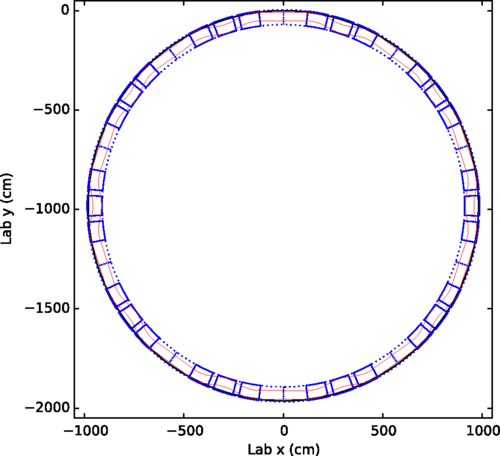Scientists from the MaRS group of ASTeC together with colleagues from Manchester University have recently completed a study on the feasibility of a normal conducting, fixed-field alternating gradient (FFAG) accelerator (NORMA) for cancer therapy (https://journals.aps.org/prab/abstract/10.1103/PhysRevAccelBeams.20.104702).
FFAGs are machines that were first introduced in the 1950s. However, they require complex magnetic fields that are difficult to produce and for this reason they were largely abandoned. In recent times, the availability of advanced CAD simulation tools combined with considerable desktop computing power, have stimulated the re-emergence of FFAGs.
The main outcome of this work is a novel approach to complex accelerator designs. Traditionally lattice designers complete a preliminary investigation relying on simplified (e.g. formula-based) magnetic field models. This process results in a relatively quick design of the lattice and a magnet specification, which is then passed on to magnet designers who try to achieve the required magnet performance with more realistic CAD magnet models. This approach works fine for relatively simple, conventional magnets, such as quadrupoles and dipoles. However, the complex magnetic fields required by NORMA combined with the limited information available at the early stages of the work make the traditional (linear) design approach unreliable.

NORMA round lattice, with minimum and maximum closed orbits shown in red.
Instead, an iterative design process, in which lattice and magnet design steps are performed in sequence, with each completed stage of the work feeding information into the next one, has been adopted. The process is repeated until the required performance level has been achieved. In this way, lattice designers work from the start with realistic magnetic fields obtained from rigorous finite-element analysis and this allows the elimination of simplifications inherent to the traditional (linear) approach. The result is an accelerator design free from assumptions and uncertainties.
